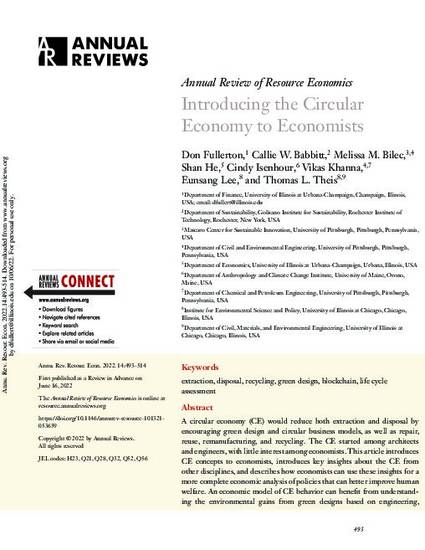
Article
Introducing the Circular Economy to Economists
Annual Review of Resource Economics
(2022)
Abstract
A circular economy (CE) would reduce both extraction and disposal by encouraging green design and circular business models, as well as repair, reuse, remanufacturing, and recycling. The CE started among architects and engineers, with little interest among economists.This article introduces CE concepts to economists, introduces key insights about the CE from other disciplines, and describes how economists can use these insights for a more complete economic analysis of policies that can better improve human welfare. An economic model of CE behavior can benefit from understanding the environmental gains from green designs based on engineering, transaction-cost savings from information based on blockchain technology, life cycle assessments based on industrial ecology, and behavioral science concepts of cultural barriers and social decision making that affect how producers and consumers respond to incentives.With various disciplines brought to bear on the subject, the combined analysis can exceed the sum of its parts.
Disciplines
Publication Date
October, 2022
Citation Information
Don Fullerton, Callie Babbitt, Melissa Bilec, Shan He, et al.. "Introducing the Circular Economy to Economists" Annual Review of Resource Economics Vol. 14 (2022) Available at: http://works.bepress.com/don_fullerton/90/
